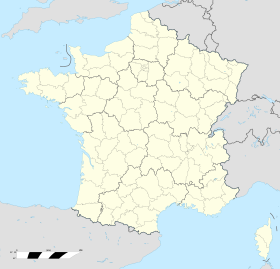Ouvrage Bousse
| Ouvrage Bousse | |
|---|---|
| Part of Maginot Line | |
| Northeast France | |
| Coordinates | 49°15′00″N 6°26′00″E / 49.25°N 6.43333°E |
| Site information | |
| Controlled by | France |
| Open to the public |
Yes |
| Site history | |
| Built by | CORF |
| In use | Preserved |
| Materials | Concrete, steel, deep excavation |
| Battles/wars | Battle of France |
| Ouvrage Bousse | |
|---|---|
| Type of work: | Small artillery work (Petit ouvrage) |
|
sector └─sub-sector |
Fortified Sector of Boulay └─Burtoncourt |
| Work number: | A24 |
| Regiment: | 162nd Fortress Infantry Regiment (RIF) |
| Strength: | 138 men + 4 officers |
Ouvrage Bousse, also known as Ouvrage Bois de Bousse, is a lesser work (petit ouvrage) of the Maginot Line in the Fortified Sector of Boulay. The ouvrage is located between petit ouvrage Hobling and gros ouvrage Anzeling, near Hestroff in the Bois du Bousse, facing Germany. A small position, it was manned primarily by reservists. It is noted for the events of 15 June 1940, when it received orders to prepare for an evacuation as German forces advanced along the Line in the Battle of France. As the garrison prepared to abandon the position, sabotaging equipment, they destroyed their telephone connection, leaving them unable to receive the order countermanding the evacuation. The garrison was captured three days after leaving Bousse. Bousse is now managed as a museum and is open to public visitation.
Bousse was approved for construction by the Commission d'Organisation des Régions Fortifiées (CORF), the Maginot Line's design and construction agency, in 1930 and became operational by 1935, at a cost of 23 million francs. The contractor was Gianotti of Nice. Bousse was sited to control the Thionville-Hargarten and Metz-Bouzonville railroad lines. A planned block to cover the railroad cutting just beyond Block 1 was never built. It would have functioned much like a casemate in a counterscarp had it been built, with the cutting standing in for a traditional outer ditch.
Bousse is a petit ouvrage with three combat blocks and an entry block. The blocks are linked by an underground gallery with barracks and a utility area (usine). The galleries are excavated at an average depth of up to 30 metres (98 ft).
A planned Block 4, equipped with an 81mm mortar turret, was not built.
In addition to the connected combat blocks, a series of detached casemates and infantry shelters surround Bousse, including
In June 1940 the garrison comprised 144 men and 5 officers of the 162nd Fortress Infantry Regiment (RIF). The commanding officer was Captain Ramaud. The Casernement de Bockange provided peacetime above-ground barracks and support services to Bousse and other positions in the area. The units were under the umbrella of the 3rd Army, Army Group 2.
...
Wikipedia

